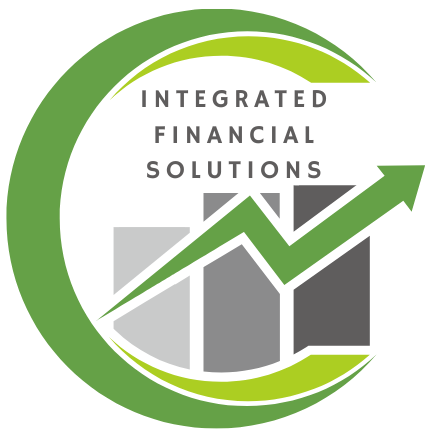Imagine this: It’s Q4, you’ve just launched a new product line, and your cash balance is shrinking faster than you expected. Your team wants to hire, but you’re not sure you can cover payroll next month. Panic sets in—because without a clear picture of what’s coming, you’re navigating blind.
That’s where financial forecasting becomes your business’s lifeline. Instead of reacting to surprises, you anticipate them, plan around them, and steer your company toward steady growth.
Ready to discover how forecasting can transform your cash flow, slash risk, and boost your bottom line? Let’s dive in.
Who This Is For
- Small business owners tired of end‑of‑month cash‑crunch stress
- Startup founders who need to manage runway and investor expectations
- Finance teams looking to upgrade from static spreadsheets to dynamic projections
- Entrepreneurs planning for major investments or seasonal swings
If you’ve ever felt uncertain about next quarter’s revenue or worried you’d run out of cash, this guide is for you.
What Is Financial Forecasting?
Financial forecasting is the process of using historical data, market trends, and strategic assumptions to project future income, expenses, and cash flow. Think of it as a GPS for your finances—showing you where you’re headed and alerting you to roadblocks ahead.
Key components include:
- Revenue Forecasts: Predicting sales based on seasonality, pipeline health, and marketing spend
- Expense Projections: Estimating fixed costs (rent, salaries) and variable costs (supplies, commissions)
- Cash Flow Forecasts: Mapping money coming in and going out to ensure you can cover obligations
- Scenario Planning: Modeling “what‑if” situations—best case, worst case, and most likely
Why You Need It—Today, Not Tomorrow
- Prevent Cash Shortfalls
Without a cash flow forecast, you’re vulnerable to missed rent, unpaid vendors, or frozen payroll. A 12‑week cash flow projection flags shortages weeks before they happen—giving you time to adjust. - Secure Financing with Confidence
Lenders and investors demand financial projections to evaluate your risk. A detailed forecast shows you’ve done your homework—and makes it easier to raise capital or renegotiate credit lines. - Optimize Growth Investments
Want to hire, launch a marketing blitz, or open a new location? Forecasting helps you pinpoint exactly when you can afford these investments—and when you should hold off. - Navigate Seasonal Swings
Retailers, landscapers, and service providers all face ebbs and flows. A rolling forecast highlights off‑season dips so you can build cash reserves in peak months. - Enhance Strategic Decision‑Making
Throwing darts at a board won’t grow your business. Forecasts turn gut feelings into data‑driven insights—letting you compare scenarios like “What if we cut marketing spend?” or “What if sales drop 10% next quarter?”
How to Build a Forecast That Actually Works
1. Gather Your Historical Data
Your past is your best predictor. Pull 12–24 months of actuals for revenue, COGS, operating expenses, and cash transactions. Clean up anomalies (one‑time spikes or write‑offs) so they don’t skew your model.
2. Choose Your Forecasting Method
- Straight‑line trend: Extrapolate past growth rates into the future.
- Seasonal model: Apply monthly or quarterly seasonality adjustments.
- Driver‑based: Tie forecasts to operational metrics (e.g., $50 revenue per lead × projected leads).
Mix and match methods to fit your business complexity.
3. Build Scenarios
At minimum, create three scenarios:
- Base Case: Your most likely outcome, using conservative assumptions.
- Best Case: If sales accelerate or costs come in lower.
- Worst Case: If revenue dips or expenses spike.
This “what‑if” approach is critical for risk management.
4. Automate and Update Regularly
A static spreadsheet is outdated the moment you hit save. Use financial forecasting tools or connect your dashboard to your accounting software so forecasts refresh automatically. Review and adjust at least monthly—or weekly during rapid growth phases.
5. Act on the Insights
Forecasts aren’t just charts on a slide deck. When a shortfall appears in your worst‑case scenario, you might:
- Delay hiring or big purchases
- Accelerate receivables by offering early‑payment discounts
- Secure a bridge loan or extend vendor terms
- Ramp up marketing to hit a higher sales trajectory
Real‑World Wins
- E‑commerce retailer avoided a $75K cash crunch by spotting a slow‑sales trend two months early and pivoting ad spend.
- SaaS startup used driver‑based forecasting to justify a $500K growth round—landing investors impressed with the CFO’s 24‑month revenue model.
- Seasonal contractor built a 12‑week cash flow forecast to smooth winter layoffs with short‑term financing, preserving team morale and project timelines.
Common Forecasting Pitfalls to Avoid
❌ Overly optimistic assumptions – Pad your projections with realistic buffers.
❌ Ignoring external factors – Account for industry trends, regulatory changes, and economic indicators.
❌ Failure to update – A forecast is useless if it isn’t refreshed with actuals.
❌ Too much detail – Focus on 10–15 critical drivers; slow models kill momentum.
Final Thoughts: From Guesswork to Growth
If you’re still relying on gut instinct or end‑of‑year hindsight, it’s time to upgrade. Financial forecasting gives you the foresight to prevent crises, seize opportunities, and steer your business toward sustainable growth.
At Integrated Financial Solutions, we help businesses build driver‑based forecasts, automate cash flow projections, and turn numbers into strategic action plans.
Stop flying blind—start forecasting your success.
Contact us today!

